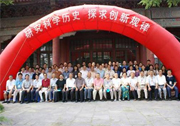| 英文摘要: |
After being introduced into China from West Asia, wheat gradually replaced such varieties of millet as Setaria italica and Panicum miliaceum to become the main dry-land farming crop in northern China, forming China’s current agricultural production pattern of rice in the south and wheat in the north. To date, there have been dozens of reported archaeological discoveries about early wheat remains. According to these newly unearthed findings, wheat was introduced into China through at least two routes between 4500 and 4000 years ago. One is the grassland route from West Asia, through Central Asia, the Bronze Age cultures of the Eurasian Steppe, the Northern Cultural Zone in northern China to the middle and lower reaches of the Yellow River. The other is the oasis route from West Asia, through Central Asia, Pamir’s oases on both sides of the Tarim Basin, the Hexi Corridor, to the Loess Plateau of northern China. |





